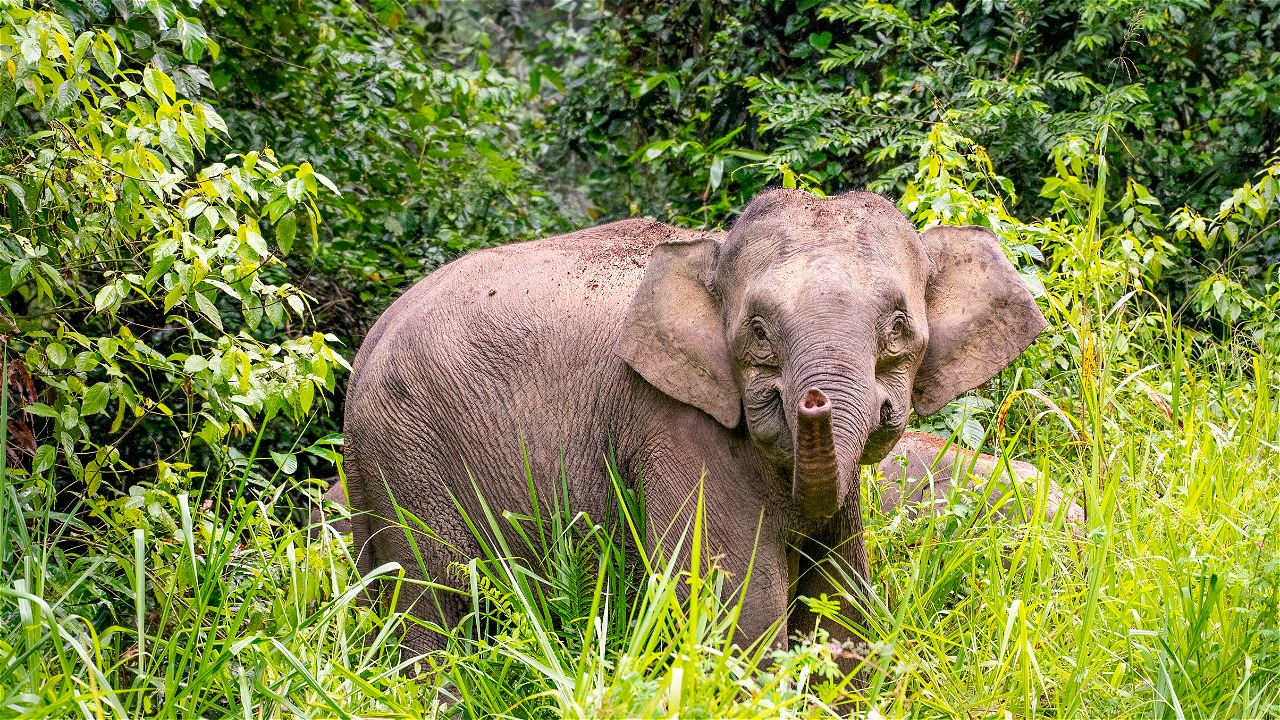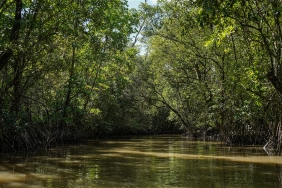JOINT ACTION PLAN FOR BORNEAN ELEPHANT CONSERVATION FORMULATED
June 27, 2011
Nunukan, East Kalimantan - A total of 40 participants from government, companies, academia, and non-governmental organizations (NGOs) gathered to reformulate a joint action plan for Borneo elephant conservation on Monday (27/06) in Nunukan District, East Kalimantan. In the workshop held at the Nunukan Regent's Office, the parties reviewed and updated the action plan that was developed in 2008. In this activity, it is hoped that the action plan can be adjusted to the latest developments in the field and the roles of each party can be better mapped and agreed upon in order to ensure the long-term survival of this unique Bornean animal. Despite the existence of the Bornean elephant, the existence of the elephant has been well documented.
Although the Bornean Elephant has existed in Nunukan for a long time, it was only in 2006 that new conservation activities were carried out in collaboration between WWF, the East Kalimantan Natural Resources Conservation Center (BKSDA), the Nunukan Regency Government and Mulawarman University who conducted a population survey around the Tulit, Tampilon, Agison and Sibuda Rivers in Nunukan Regency, which is also included in the Heart of Borneo area. The results of the survey stated that the Bornean Elephant population in Nunukan is estimated to be around 20-80 animals.
The community in Sebuku stated that the elephant habitat is now much reduced and the main remaining habitat is now in the HPH concession area. This has caused some solitaire elephants to enter residential areas and some oil palm plantations, causing conflicts. The conflict started in 2005 until now. The results of monitoring in 2010 by WWF Indonesia, there was 1 solitary elephant in conflict in 11 villages, attacking various types of crops owned by the community, especially oil palm and banana plants that are favored by elephants. "Currently, there are many reports from the community that the elephant has entered the settlement area.
"Currently, there are many reports from the community about their gardens being destroyed by elephants. The long-term solution to avoid conflict is to include the presence of elephants in the consideration of space utilization, especially around elephant habitat. While for the short term, it is necessary to handle conflicts as soon as possible, considering that conflicts can occur at any time," said Agoes Soeyitno, Species Conservation Coordinator of WWF-Indonesia for the East Kalimantan region. "It is feared that if the elephant's habitat is destroyed, the elephant will not be able to survive.
"It is feared that if the habitat continues to decrease, more and more elephants will leave their main habitat and cause more conflicts, especially in community settlements," he added. Considering the aspects and dimensions of conservation, the WWF-Indonesia Species Conservation Coordinator for the East Kalimantan region will be able to handle conflicts immediately.
Considering the aspects and dimensions of Borneo elephant conservation, Dodi Rukman, WWF Indonesia Project Leader for Kayan Mentarang National Park (TNKM) Program stated, "Borneo elephant conservation cannot be done only by certain parties. But it must involve all relevant parties so that strategies and action plans can be well developed and effectively implemented by all parties." The Nunukan Regency Government itself has been involved in the conservation of the Borneo elephant.
Danang Anggoro from East Kalimantan BKSDA said, "Borneo Elephant Conservation has been included in the central government's policy as stated in the National Action Plan and Strategy for Sumatran and Borneo Elephant Conservation. The national action plan and strategy can be used as a reference in re-developing the strategy and action plan for Borneo Elephant conservation."
For more information, contact:
- Dodi Rukman, Project Leader WWF Indonesia TNKM Program, Email: drukman@wwf.or.id
- Agus Suyitno, Species Conservation Coordinator WWF Indonesia East Kalimantan region, Email: asuyitno@wwf.or.id
- Agus Suyitno, Species Conservation Coordinator WWF Indonesia East Kalimantan region, Email.
Note to editor:
WWF Indonesia is an independent, global conservation organization founded in 1961 in Switzerland, with nearly 5 million supporters and an active network in more than 100 countries. In Indonesia, the organization is active in more than 25 fieldwork areas and 17 provinces. WWF-Indonesia's mission is to save biodiversity and reduce the ecological impacts of human activities through: Promoting a strong conservation ethic, awareness and conservation efforts among Indonesians; Facilitating multi-stakeholder efforts for the protection of biodiversity and ecological processes at the ecoregion scale; Advocating for policies, laws and law enforcement that support conservation, and; Promoting conservation for human well-being, through the sustainable use of natural resources. For more about WWF-Indonesia, please visit the organization's main website at www.panda.org; local sites at www.wwf.or.id.
About the Borneo Elephant
The Borneo elephant, also known by experts as the Borneo Dwarf Elephant/Elephant Pigmy Borneo, is an elephant that has a smaller body size than other elephant relatives. This elephant is unique in that it is the smallest elephant in the world. It is shorter, has wider ears and a longer tail that reaches the ground.
The elephants of Borneo (Borneo and Sabah) remain a mystery. A recent report titled "Origins of the Elephants Elephas Maximus L of Borneo," published in the Sarawak Museum Journal shows that there is no archaeological evidence for the long-term presence of elephants in Borneo. Many manuscripts tell that Borneo elephants were imported from outside the island hundreds of years ago.
Scientists presented their findings in 2003. DNA tests conducted by Columbia University and WWF Malaysia using DNA samples from elephants in Sabah showed the possibility that Bornean elephants are genetically distinct from elephant subspecies in Sumatra and the rest of Asia.





